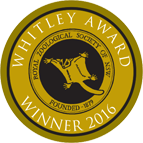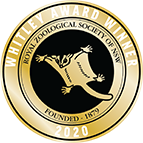Data Services
The aims of the NSWBA include providing detailed information for:
- environmental impact studies
- habitat and species conservation and management
- environmental research work
For this reason the NSWBA Atlas may be accessed by anyone working on conservation and environmental planning.
Information Stored
The available information includes (for each record) – the species reported, the geographic location, the latitude and longitude for each location, the person/s submitting the record, the first and last dates on which the species was recorded and the habitat/s in which the bird/s were recorded. In addition, the NSW status is noted for each species listed as vulnerable, endangered or extinct under the NSW Threatened Species Conservation Act.
Geographic Resolution
Data has been stored in grid cells of 10’ of latitude by 10’ of longitude. Though grids actually vary in size throughout NSW, this is not important when statistical techniques are applied to the data, (eg) when reporting rates are calculated. Across the state, the grids measure approximately 16km wide by 17km deep. Non-standard reports can be produced for specific locations within a grid cell, or spanning more than one grid cell.
Quality Control
The accuracy and completeness of all records in the database is reviewed on a regular basis by a panel of 3 expert field ornithologists. This panel also evaluates records of species reported outside their normal/published range. Either a NSW appraisal committee or a national appraisal committee assesses records of the rarest species or those otherwise considered unusual. For such species, only reports accepted by one of these committees are retained as valid records within the database.
Reports Available
The NSW Bird Atlassers can generate both Standard and Non Standard reports.
- AREA LISTS: These are listings of birds reported in a particular area. For a single grid, all recorded species are listed together with information on the number of reports of each species, the number of breeding reports for each species, and a reporting rate***. Information on the total number of species reported within the area, the total breeding species and the total number of visits is included. Reports can be provided for all data or for records covering a particular period (eg) for the 1990’s, records for 1998, etc.
- REGIONAL LISTS: These are similar to Area Lists but cover any pre-defined set of grid cells. Additional detail is provided about the number of grids within the defined region that contain reports of each species, and the total number of separate areas covered by the report. Reports can be provided for all data or for records covering a particular period (eg) the 1990’s, records for 1998, etc.
- SPECIES LISTS: These are a whole of state (NSW/ACT) listing for a single species. The lists specify grids in which it has been reported, where it has been found breeding, the number of reports (with presence and breeding, listed separately) from each area and the total number of areas and reports involved. Reporting Rates*** for each grid are available. Reports can be provided for all data, or for records covering a particular period (eg) the 1990’s, records for 1998, etc.
- Non-standard reports: We will assess individual requests according to their complexity and, where they can be met, discuss charges with the enquirer.
Each report includes the species status under the NSW Threatened Species Act.
***Reporting Rates are a way of extracting quantitative information from presence/absence data. They measure conspicuousness. That is, they measure the likelihood that an average observer might, with an average amount of search effort, record a particular species within the area concerned. Reporting Rates have been shown by researchers to provide meaningful information in relation to distribution structures, migration and habitat preferences. They are sometimes considered to be a broad measure of abundance and, over time, may point to changes in abundance. (However, the use of Reporting Rates as a measure of relative abundance can be distorted, and users should ensure they understand the sources and effects of potential biases).
How to Obtain Reports
All reports entail acceptance of a data licence – conditions are detailed below. A copy of the licence forms part of the Tax Invoice issued, for which payment (and therefore acceptance of the licence) must be made before the issue of any report. Ordinarily, a Tax Invoice will be issued within 48 hours and, on receipt of payment, the report will be dispatched.
A written request specifying the data required, the area of report coverage, the purpose for obtaining the data and the details of the requesting organisation, must be forwarded to:
THE NSWBA ATLAS OFFICE
PO Box 717
WOOLGOOLGA NSW 2456
ENQUIRIES should be directed to:
DICK COOPER at the above address, Telephone 0402 159 146, Email: treasurer@nswbirdatlassers.org.au
Format
Data is normally provided as a printout.
Conditions of Sale
The information contained on the listing/s supplied, is made available on the condition that:
- Payment of the account is received by New South Wales Bird Atlassers Inc. (the ‘Licensor’) within fourteen (14) days of the invoice date;
- Any use in whole or in part or in any form of any of the information contained on the said listing/s, must include clear acknowledgment that the said information was made available by the Licensor;
- The said information is made available for the sole use of the requesting organisation (the ‘Licensee’) for research, analyses and mapping purposes in connection with the report/s stated in the Licensee’s order only, and may not be published, assigned, transferred, sold or given, in any form, to or used by any other person or organisation;
- After a period of five (5) years or prior termination of the Licensee’s activities, the Licensee undertakes to destroy the said information unless otherwise agreed in writing by the Co-ordinator, New South Wales Atlassers Inc., and
- This Licence constitutes the entire agreement between the Licensee and the New South Wales Bird Atlassers Inc.
Delivery of Reports
- STANDARD REPORTS: All standard reports are sent by post within 24 hours of receipt of payment. Facsimile copies can be provided, if required.
- NON STANDARD REPORTS: Most complex reports can be delivered within 2 weeks. Delivery of these reports depends on the complexity of the request, the amount of research associated with it and the extent to which data has to be analysed in relation to the request.
Fees
Fees are charged for data extraction, processing and delivery of reports. The fees are applied to assist in the on-going maintenance of the database and associated equipment. No labour costs are levied for any Standard Report. Minimal service charges are applied to Non Standard (complex) Reports.
A discounted rate is applied to requests for a number of separate Standard Reports (see example under Area List):
| Report Type | Fee (includes GST) | |
| Area List | 1 area | $99.00 per list |
| 2 areas | $96.00 per list | |
| 3 areas | $92.00 per list | |
| 4 areas | $88.00 per list | |
| More than 4 areas | Contact Treasurer | |
| Regional List | $99.00 per list | |
| Species List | $99.00 per list | |
| Non Standard Reports | $44.00 per hour |










